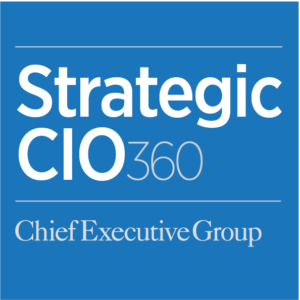Since the advent of the inventive compensation plan, boards and senior management teams have struggled to identify an ideal measure of innovation. With surges in market disruption, and investors increasingly focusing on resilience and sustainability measures, companies are pursuing innovation more aggressively. In doing so, they seek to evolve business models to be compatible with their ESG vision and agenda and also to gain a competitive edge.
Experience suggests the reason no universal “silver bullet” measures for innovation exist is because innovation is not monolithic or homogenous. That is, it means something different to each company strategically, culturally and operationally. 3M’s well documented 15% rule and Google’s similar 20% rule (employees encouraged to spend time on side innovation projects that interest them) work well for these organizations’ culture and operations. However, such an approach would not apply to countless other companies.
Effective measurement requires an understanding of how innovation is expected to create value, the time horizon over which value is created, and triangulation of metrics using a combination of qualitative and quantitative factors. Clayton Christensen observed in his 1997 book Innovator’s Dilemma the important difference between disruptive and sustaining innovation. Professors from Kellogg, MIT, Stamford, INSEAD, London School of Economics, Cornell and Wharton offer multiple diverse models and “ecosystems” for effective corporate innovation. Practical business experience validates the same. While taxonomies and theories may vary, the consensus between business leaders and academia is that not all innovation is created equal, nor is all innovation process.
The factors for measuring innovation can be broadly categorized into activities- and outcomes-based metrics. Activity-based metrics can be easily translated into actionable plans throughout the organization, but often are too rigid. Incubation of ideas requires an environment that feels culturally, politically and psychologically “safe” for employees to take risks and chase some dead ends every now and then. Pursuing a pre-determined number of “good ideas” can be too forced and counterproductive. Outcome-driven metrics, on the other hand, provide more direct linkage between innovation and tangible value creation (e.g., increased efficiency/profitability/growth) and can be framed with flexibility to capture progress over a longer-term time horizon, but can feel too distant for some real-time innovators. As a result, for most companies, meaningful innovation measurement requires a balance between activity- and outcome-based metrics:
The “Five Ps” of Innovation Measures
Organizations have found it effective to group innovation measures into “Five Ps” as boards and senior management teams pursue the right framework for their organizations (covering a combination of metric types):
1. Pipeline. The number and quality of projects in the various stages of the innovation process relative to goals/expectations/leading practice. For example:
• Number of projects at each respective stage and overall
• Percent of goal projects at each respective stage and overall
• Quality or validity standards for projects in each respective stage and overall
• Number/percent of new projects entered pipeline during year/trailing 12 months
• Number of projects accepted/adopted by process during year/trailing 12 months
2. Pace. The speed at which ideas/projects move through innovation the process:
• Average/mean duration of idea entering/existing each stage
• Average/mean time to complete process
• Time-to-idea ratio metrics for each stage
• Time-to-idea ratio metrics to complete process
• Time standards for different categories of innovation (e.g., disruptive, incremental)
3. Process. The extent to which the company’s innovation process itself is followed (usually translates to governance metrics):
• Adoption of innovation governance protocols
• Inclusion of key stakeholders in innovation input/review
• Inclusion of key perspectives in innovation input/review
• Frequency and level of review
• Communication frequency to relevant audiences
• Percent investment/investment-to-goal in innovation process
4. Portfolio. The extent to which the portfolio of projects reflects the mix and diversity of the company’s strategy and goals (generally alignment/gap assessment-type metrics):
• Alignment of innovation portfolio to company strategy
• Matching of specific viable concepts to business/growth plans
• Percent of “ready now,” “ready in 12 months,” “ready in 24 months” ideas relative to business/growth plans
• Alignment of ideas to customer needs
• Alignment of ideas to industry evolution
5. Products. The impact on business outcomes of products/services that have resulted from the innovation process:
• Number/percent of existing products/services introduced in past 12 months, 24 months, 36 months
• Percent of revenues from products/services introduced in past 12 months, 24 months, 36 months
• Percent of profits/earnings from products/services introduced in past 12 months, 24 months, 36 months
The “Five Ps” serve as practical categories for measuring innovation and monitoring organizational progress on a routine basis, while also aligning to long-term value creation metrics. In general, effective measurement includes six to eight metrics that cover the 5 Ps, as well as a combination of activity- and outcomes-based measures. In many cases, boards will follow a more extensive set of metrics through a dashboard or scorecard of measures that represent all 5 Ps in more depth.
Linked value creation measures (such as Return on Capital or period-specific earnings growth), ultimately prove to be most effective in executive incentive plans because they allow senior leaders to plan strategically and execute with flexibility and agility. As innovation does not always come from the top of an organization, the role of senior management is to create the right culture, break down barriers and help middle management bring forward good ideas from their teams. With management models increasingly characterized by more agile, distributed structures, effective innovation tends to capitalize on a mix of centralized and decentralized process, with some of the best ideas coming from deep within the organization. Meaningful measures reflect and enable innovation throughout the organization.
To drive innovation mindset, senior leaders frequently need to emphasize qualitative progress that cannot be measured easily. For example, senior leaders may wish to adopt design thinking into process innovation, which would require functional teams to ideate in a more agile, product-focused and customer-driven environment (“customer” in this case means other functional teams). A mindset shift, fueled by a combination of activity and outcome innovation measures, will take shape over time and ultimately create value for the organization through innovation. This mindset shift also supports both disruptive and sustaining innovation wherever it occurs in the organization through a portfolio of applicable metrics that are appropriate for the specific organization, its culture, strategy, and process.
Emerging from the pandemic, investors, boards and management teams have learned that organizational resilience itself provides a new form of competitive advantage. Innovative businesses are more resilient in economic headwinds because their cultures and business models allow them to pivot quickly as the organization navigates through market uncertainty.
As intangible assets continue to be a dominant force in driving value growth in the market, companies will accelerate their investments in innovation. A balanced approach to measurement that defines the innovation “North Star” and tracks progress, connecting to supporting management and executive incentive plans that articulate how innovation drives long-term value creation for the business, are essential elements for driving sustainable performance in the new environment.









